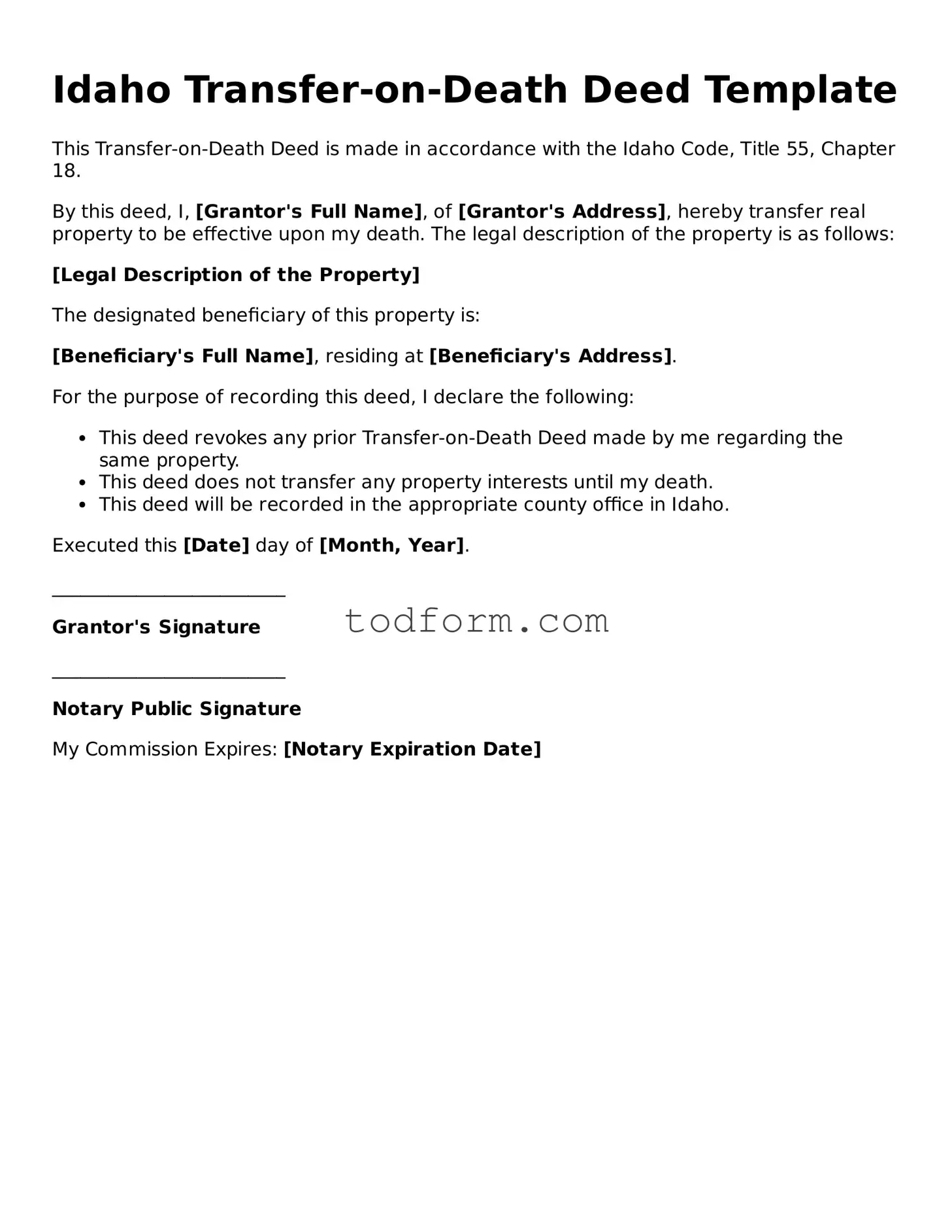Idaho Transfer-on-Death Deed Template
This Transfer-on-Death Deed is made in accordance with the Idaho Code, Title 55, Chapter 18.
By this deed, I, [Grantor's Full Name], of [Grantor's Address], hereby transfer real property to be effective upon my death. The legal description of the property is as follows:
[Legal Description of the Property]
The designated beneficiary of this property is:
[Beneficiary's Full Name], residing at [Beneficiary's Address].
For the purpose of recording this deed, I declare the following:
- This deed revokes any prior Transfer-on-Death Deed made by me regarding the same property.
- This deed does not transfer any property interests until my death.
- This deed will be recorded in the appropriate county office in Idaho.
Executed this [Date] day of [Month, Year].
_________________________
Grantor's Signature
_________________________
Notary Public Signature
My Commission Expires: [Notary Expiration Date]
